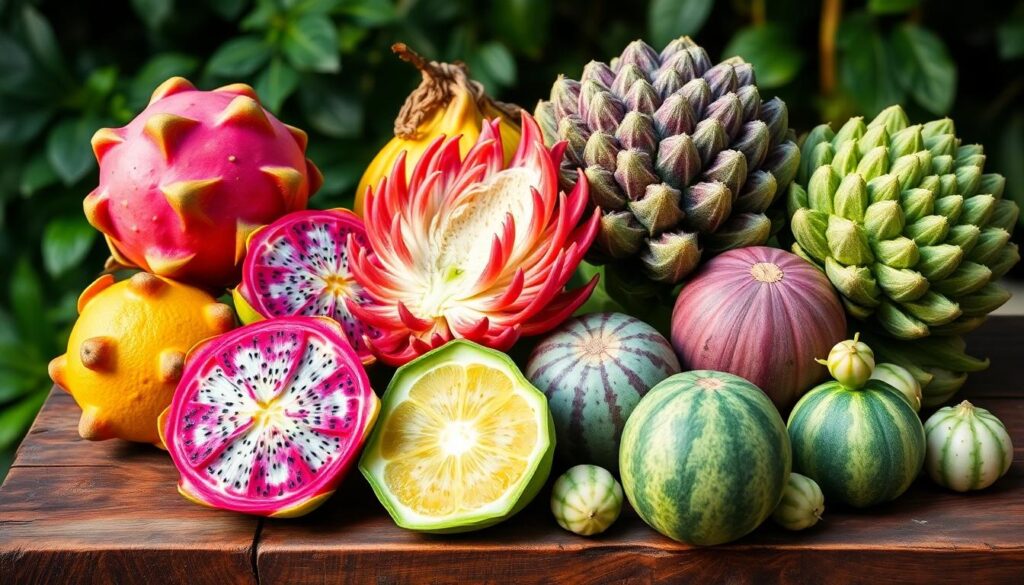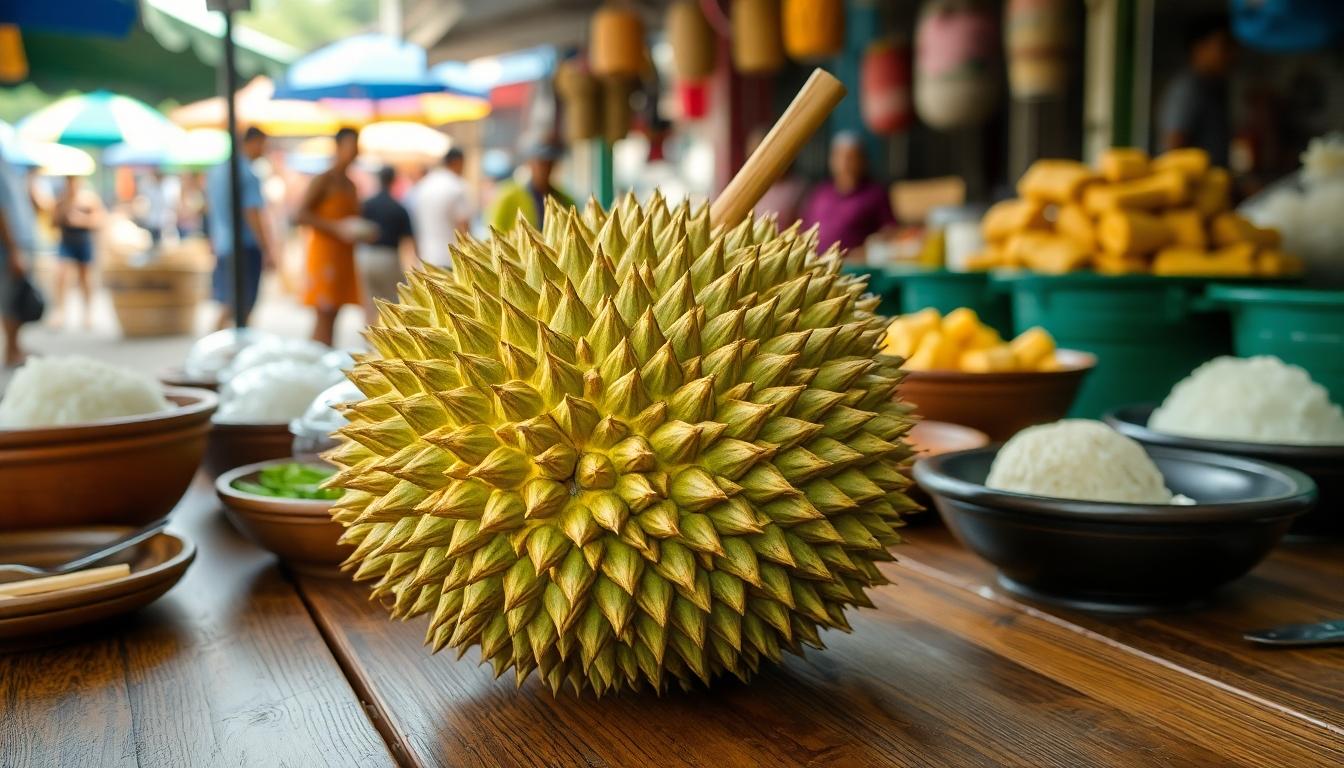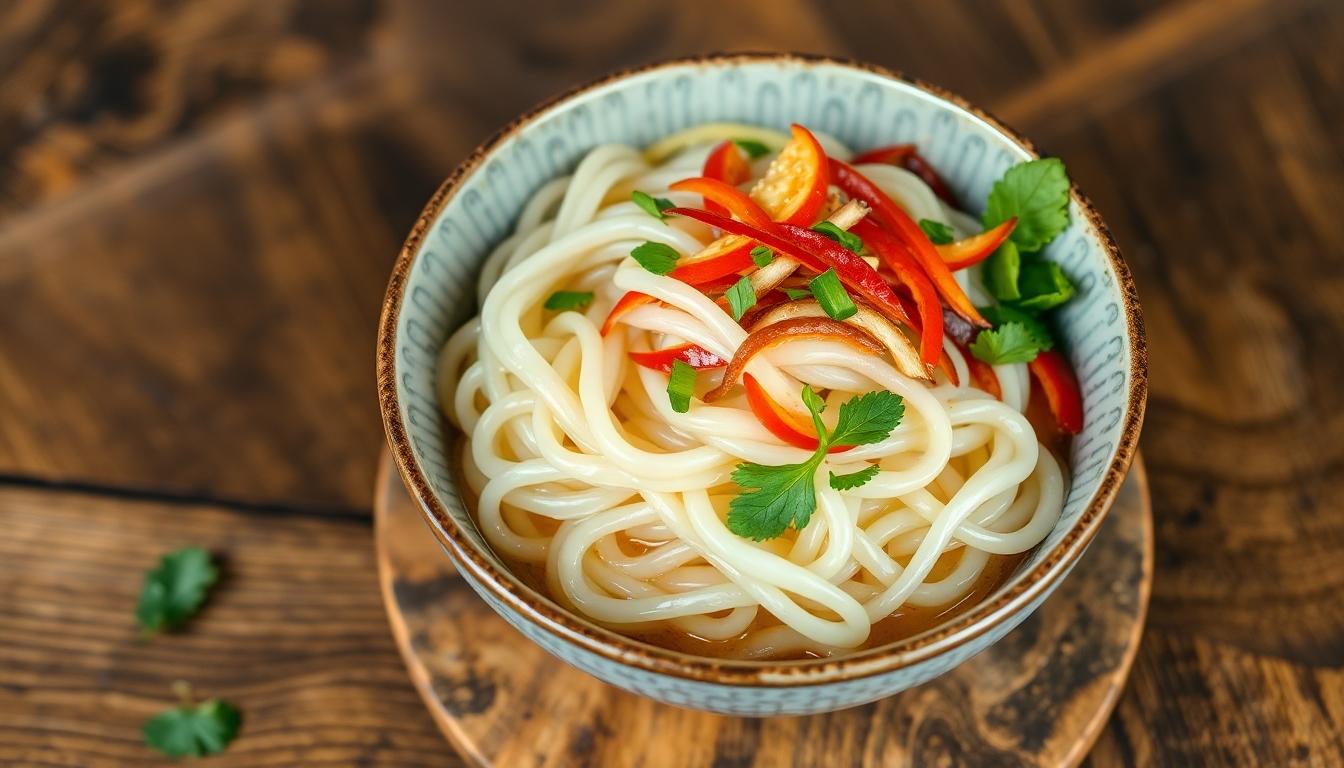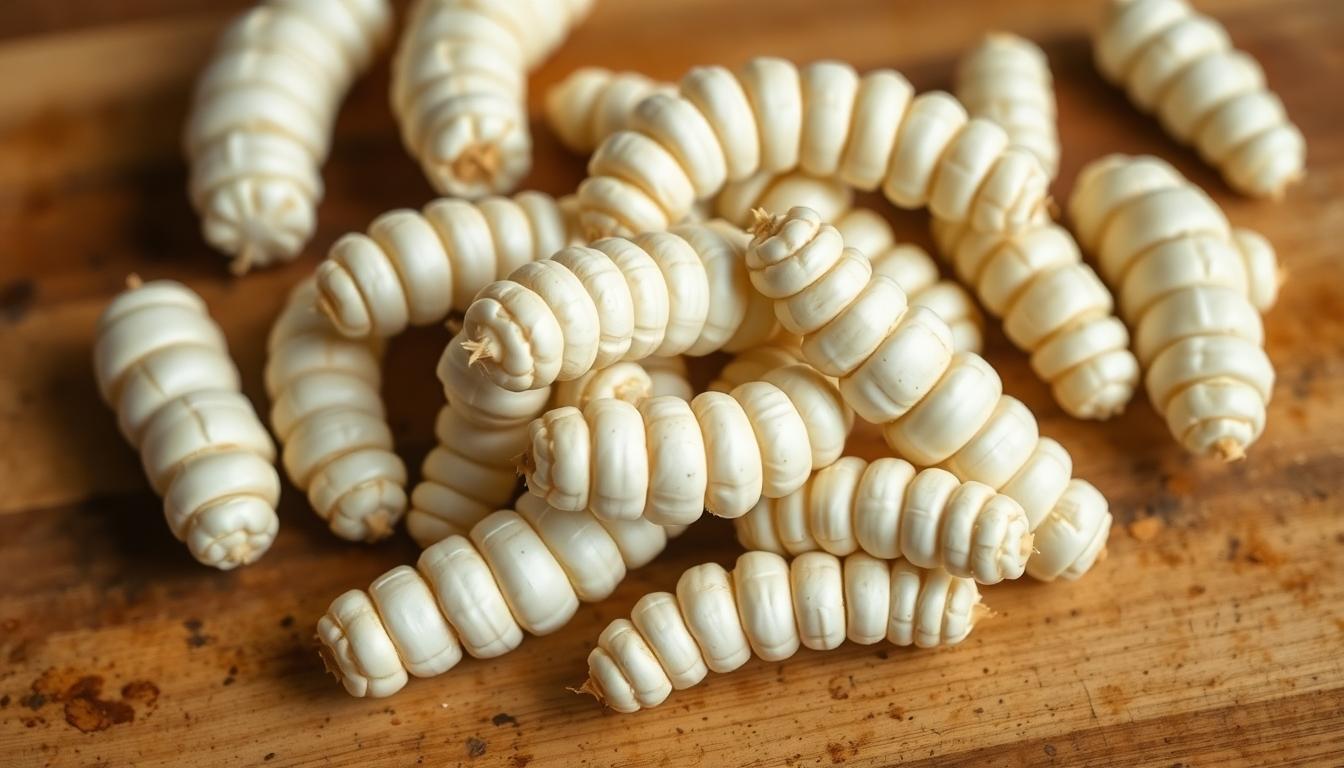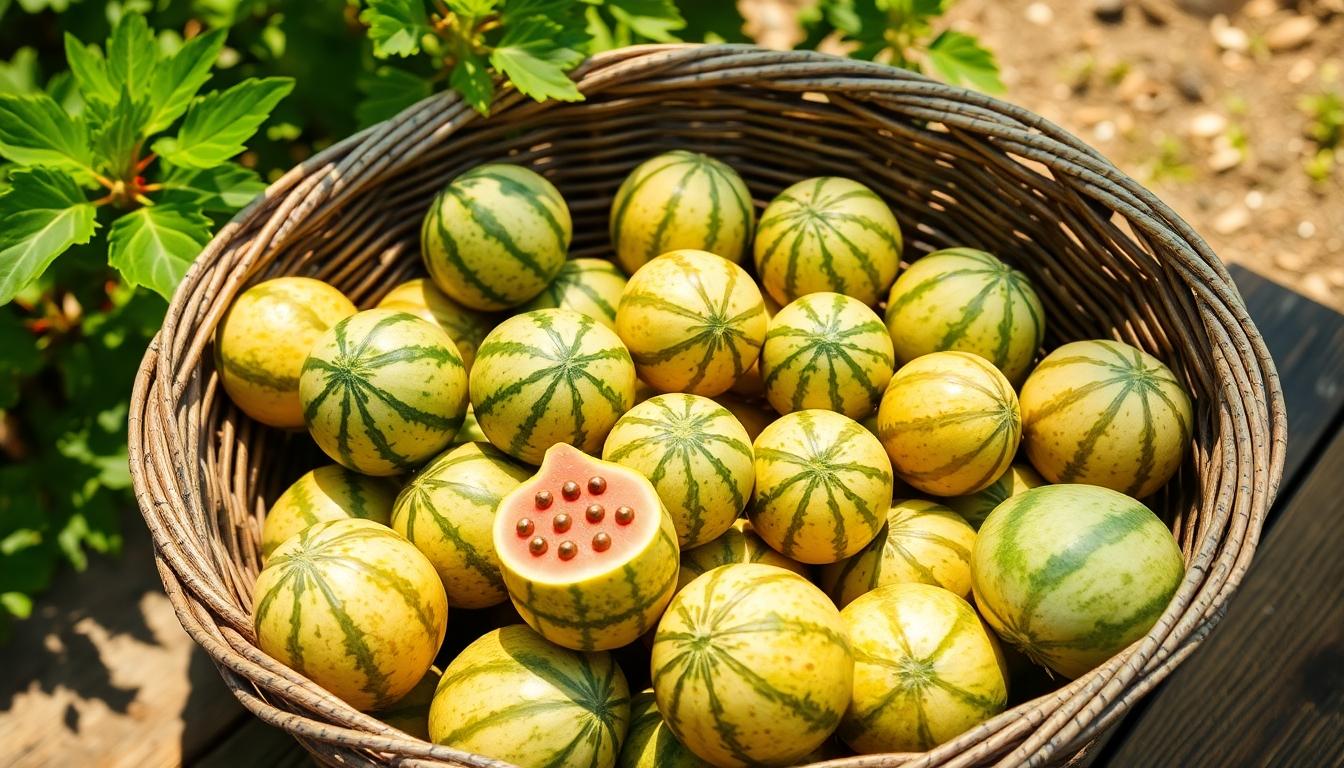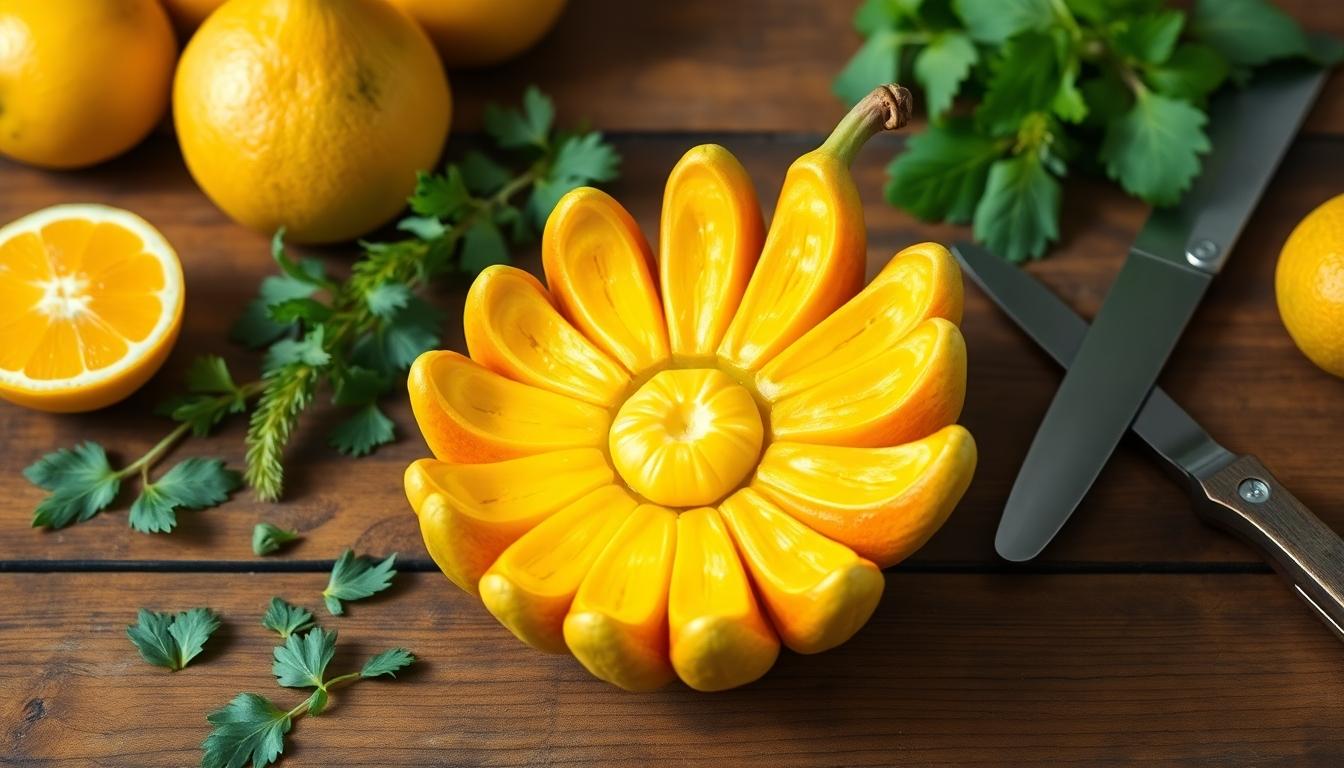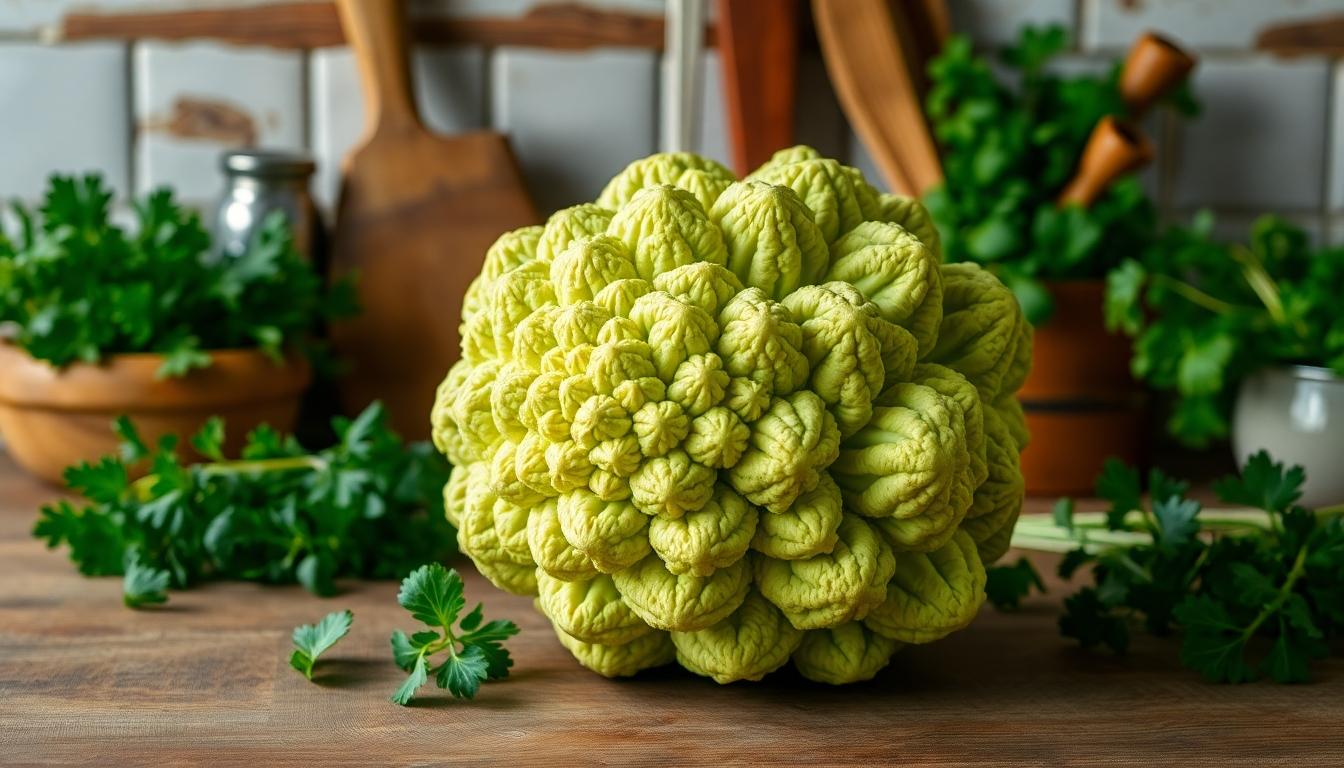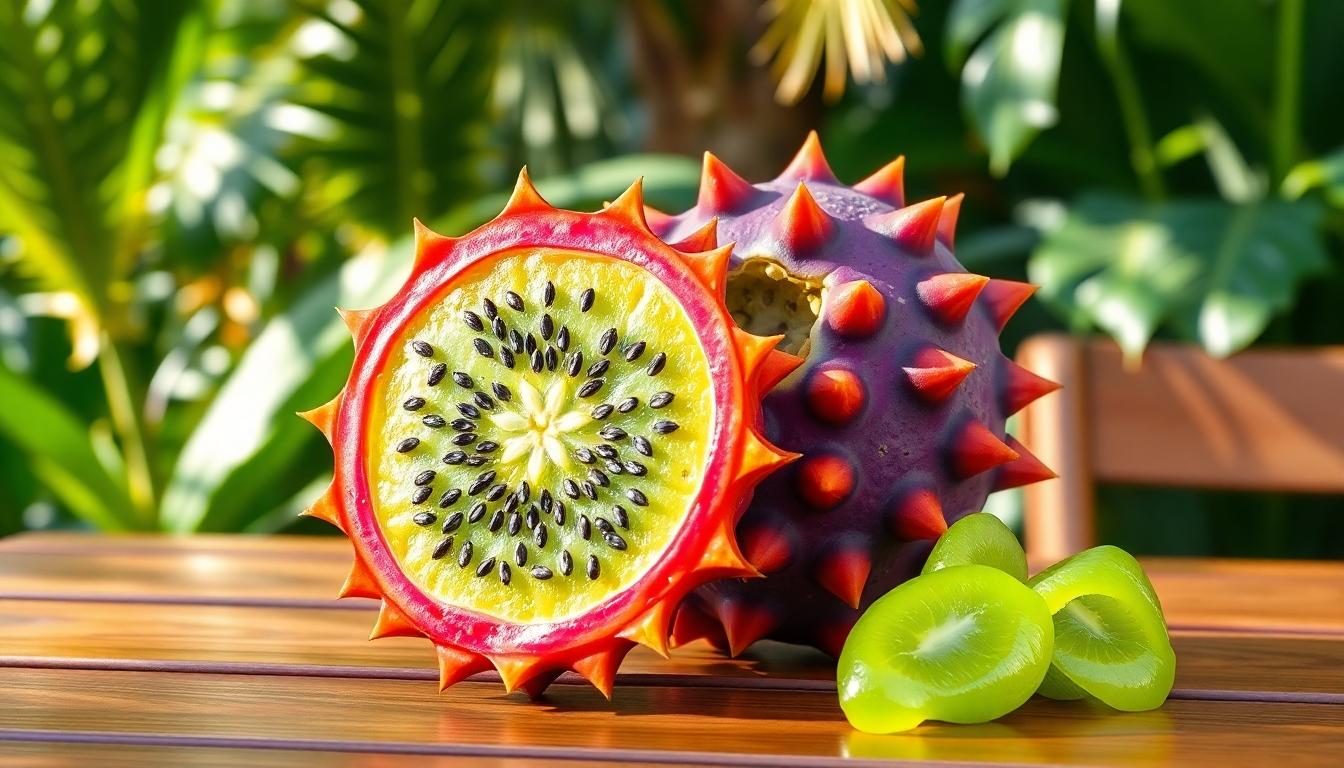When we think of exotic cuisine, we often imagine unusual dishes from far-off lands. But nature itself offers an incredible array of bizarre edible plants that can transform ordinary meals into extraordinary culinary adventures. From flowers that taste like oysters to fruits that look like alien spacecraft, the plant kingdom hides unexpected treasures waiting to be discovered.
We’ll take you on a journey through the industry’s most unusual edible plants that you’ve probably never heard of—yet might soon be adding to your shopping list. These botanical oddities aren’t just conversation starters; they’re packed with nutrients and unique flavors that can revolutionize your cooking. Whether you’re a curious foodie or an adventurous gardener, these strange yet delicious plants will expand your culinary horizons in ways you never imagined.
10 Bizarre Edible Plants That Defy Culinary Expectations
1. Dragon Fruit (Pitaya)
Dragon fruit looks like it’s from another planet with its bright pink or yellow exterior and speckled flesh. This cactus fruit contains tiny black seeds similar to kiwi and offers a subtly sweet flavor profile that’s refreshingly light. Packed with vitamin C, iron, and magnesium, dragon fruit makes an exceptional addition to smoothie bowls or fruit salads. Chefs worldwide have embraced this visually stunning ingredient for its ability to elevate desserts with minimal effort.
2. Kohlrabi (German Turnip)
Kohlrabi resembles a UFO with its bulbous base and protruding stems. This cruciferous vegetable tastes like a cross between cabbage and broccoli stems with a hint of radish spiciness. Raw kohlrabi adds crunch to slaws and salads, while the cooked version develops a delicate sweetness perfect for soups and gratins. Farmers markets often showcase this nutrient-dense vegetable during fall and spring seasons.
3. Buddha’s Hand Citron
Buddha’s Hand features finger-like tendrils that curl outward from the base, creating a hand-like appearance. Unlike typical citrus, this fruit contains no juice or pulp but boasts intensely fragrant zest ideal for flavoring desserts, cocktails, and vinaigrettes. Its complex aroma combines lemon, lavender, and jasmine notes. Chefs prize this unusual citrus for infusing oils and spirits with its distinctive fragrance.
4. Romanesco Broccoli
Romanesco displays a mesmerizing fractal pattern with lime-green spiraling florets arranged in perfect mathematical sequence. This vegetable sits at the intersection of broccoli and cauliflower with a nutty, earthy flavor and delicate texture. Steaming Romanesco briefly preserves its striking appearance and nutritional benefits while allowing its subtle flavor to shine. Mathematicians and food enthusiasts alike marvel at this natural example of Fibonacci sequences.
5. Jackfruit
Jackfruit grows to massive proportions, sometimes weighing up to 100 pounds as the largest tree-borne fruit. When young, this Southeast Asian fruit has a remarkably meat-like texture that absorbs flavors beautifully, making it popular in vegan pulled “pork” dishes. Ripe jackfruit offers a sweet tropical flavor combining pineapple, banana, and mango notes. Food trucks across America have adopted this versatile ingredient for creative plant-based options.
6. Cucamelon (Mouse Melon)
Cucamelons look exactly like tiny watermelons the size of grapes but taste like cucumber with a tangy citrus finish. These adorable fruits grow on vines and make perfect pickles or conversation-starting garnishes for cocktails and salads. Native to Mexico and Central America, cucamelons require minimal maintenance to grow and produce abundant harvests throughout summer. Home gardeners appreciate their resistance to pests and drought conditions.
7. Oca Tubers
Oca tubers present themselves in vibrant colors ranging from yellow to pink to deep purple with a knobby, fingerlike appearance. These Andean root vegetables develop a sweet, caramel-like flavor when exposed to sunlight after harvesting. Roasting brings out their natural sugars, creating a dish reminiscent of candied sweet potatoes without added sweeteners. Peruvian communities have cultivated these nutritious tubers for thousands of years at high altitudes.
8. Black Sapote (Chocolate Pudding Fruit)
Black sapote earns its nickname “chocolate pudding fruit” honestly, with dark brown flesh that tastes remarkably similar to chocolate mousse when fully ripe. This persimmon relative contains no actual chocolate but offers natural sweetness without added sugars or fats. Health-conscious dessert lovers blend the creamy pulp with banana and cinnamon for guilt-free pudding alternatives. Native to Mexico, this fruit ripens after picking and transitions from firm and inedible to soft and delicious.
9. Salsify (Oyster Plant)
Salsify roots look unassuming with their long, brown, carrot-like appearance, but they hide an unexpected flavor profile. When cooked, this root vegetable develops a distinct oyster-like taste that earned it the nickname “oyster plant.” Chefs value salsify for creating elegant vegetarian alternatives to seafood dishes through simple preparation methods like braising or puréeing. Victorian gardeners considered this versatile vegetable a winter staple before it fell out of fashion.
10. Crosnes (Chinese Artichokes)
Crosnes resemble tiny white Michelin men with their segmented, spiral-shaped tubers that grow just beneath the soil surface. These crunchy vegetables offer a water chestnut texture with a subtle artichoke flavor that remains crisp even after cooking. French cuisine embraces crosnes as luxury ingredients in winter salads and sautés where their unique appearance remains intact. Gourmet restaurants feature these labor-intensive tubers as garnishes for their visual appeal and delicate flavor.
Durian: The Infamously Smelly Fruit That Tastes Like Heaven
Durian, scientifically known as Durio species, has earned its royal title as the “King of Fruits” throughout Southeast Asia. This controversial fruit presents a fascinating paradox: while its aroma repels many, its luxurious taste has created devoted fans worldwide.
Why Durian Is Banned in Many Public Places
Durian’s notorious odor can be detected from impressive distances, often compared to rotting onions, sewage, or decaying matter. The smell is so potent that many hotels, airports, and public transportation systems throughout Southeast Asia have implemented strict bans against carrying this fruit. Signs prohibiting durian are a common sight in Singapore’s MRT stations and throughout luxury hotels in Thailand, Malaysia, and Indonesia. The aroma is so distinctive that it can permeate through the fruit’s thick, spiky exterior even before being opened. Many first-time tasters report needing to overcome the psychological barrier of the smell before experiencing its surprisingly delicious flesh.
Culinary Uses of the King of Fruits
Durian’s custard-like flesh offers a complex flavor profile that combines sweet and savory notes reminiscent of almond, vanilla, and caramel. Fresh durian is traditionally enjoyed on its own as a delicacy, with enthusiasts selecting exact varieties based on their unique flavor characteristics. Creative chefs incorporate durian into various desserts including ice cream, cakes, and pastries that showcase its rich, creamy texture. In Indonesia, durian undergoes fermentation to create tempoyak, a savory condiment used to enhance the flavor of traditional dishes. Many Southeast Asian cultures also combine durian with sticky rice or use it as filling in sweet buns and pastries. The versatility of this unusual fruit extends from street food applications to high-end restaurant offerings, demonstrating its culinary value even though its challenging aroma.
Dragon Fruit: The Neon-Colored Cactus Fruit With Subtle Flavor
Dragon fruit (Hylocereus spp.), also known as pitaya, stands out with its vibrant pink or yellow exterior and white or red flesh speckled with tiny black seeds. This tropical cactus fruit offers a mildly sweet, kiwi-like flavor profile that works wonderfully in both sweet and savory culinary applications while providing impressive health benefits through its rich antioxidant content, vitamin C, and prebiotic fiber that supports gut health.
Growing Your Own Dragon Fruit Plants
Dragon fruit thrives best in USDA zones 10-12 where warm temperatures allow these tropical cacti to flourish year-round. These plants require well-draining soil that prevents root rot, full sun exposure for optimal growth, and a sturdy trellis system to support their climbing habit. Nighttime is when the magic happens, as dragon fruit produces large, fragrant flowers that bloom only after dark, creating a spectacular nocturnal display. New plants begin bearing fruit relatively quickly, typically within 6-12 months after establishment, depending on your exact growing conditions. Water requirements remain minimal once plants mature, making dragon fruit surprisingly drought-tolerant even though its juicy interior, which appeals to gardeners seeking low-maintenance edible landscaping options.
Popular Dragon Fruit Recipes
Dragon fruit’s versatility in the kitchen makes it a favorite among creative cooks looking to add visual appeal to their dishes. Smoothie bowls represent one of the most popular applications, where the fruit’s vibrant color creates an eye-catching base for toppings like granola, coconut flakes, and other fresh fruits. Fresh dragon fruit cubes bring textural interest and subtle sweetness to fruit salads, yogurt parfaits, and açai bowls without overwhelming other flavors. Sorbets and frozen desserts benefit from dragon fruit’s high water content, producing refreshing treats with minimal added sugar. Cocktail enthusiasts appreciate how dragon fruit elevates drinks both visually and with its delicate flavor notes. Savory applications include pairing dragon fruit with seafood dishes where its mild profile complements rather than competes with delicate fish flavors, or incorporating it into citrus-based dressings for a unique twist on salads.
Ackee: Jamaica’s Deadly Delicacy When Improperly Prepared
Jamaica’s national fruit, ackee (Blighia sapida), presents a fascinating paradox – a delicious delicacy that can be deadly if not properly prepared. This unique fruit contains hypoglycin A, a powerful toxin that causes severe poisoning when consumed before it’s fully ripened, historically linked to “Jamaican Vomiting Sickness.”
The Proper Harvesting and Preparation Methods
Safe consumption of ackee begins with proper harvesting techniques that prioritize patience. Harvesters must wait until the pods naturally turn red-yellow and split open on the tree, revealing the edible yellow arils inside. Premature picking of unopened pods can lead to dangerous levels of toxins remaining in the fruit. Careful plucking keeps the fruit from touching the ground, which significantly reduces contamination risk.
Proper preparation requires meticulous attention to detail when processing the harvested fruit. The edible yellow arils must be completely separated from the seeds and toxic red membranes before cooking. Thorough parboiling or cooking neutralizes any residual toxins that might remain in the arils. Sun-drying unopened ripe pods for 3 days offers an alternative method to ensure safe natural splitting without compromising food safety.
Traditional Jamaican Ackee Dishes
Ackee and saltfish stands as Jamaica’s signature national dish, combining the creamy fruit with salted cod in a flavorful medley. Chefs sauté the parboiled ackee with onions, Scotch bonnet peppers, tomatoes, and spices to create this iconic breakfast staple. The fruit’s mild nutty flavor and remarkable ability to absorb surrounding seasonings makes it exceptionally versatile in Jamaican cuisine.
Beyond the classic pairing with saltfish, ackee features prominently in many traditional dishes throughout Jamaica. Cooks incorporate it into savory stir-fries that highlight its unique texture and subtle taste. Flavorful rice dishes often include ackee for added nutritional value and distinctive creaminess. Fritters made with ackee provide a delicious alternative preparation that showcases the fruit’s adaptability in both everyday meals and special holiday celebrations.
Konjac: The Plant That Makes Zero-Calorie “Miracle” Noodles
Konjac (Amorphophallus konjac) is one of the most fascinating bizarre edible plants, primarily known for its starchy root that creates remarkably gelatinous textures when processed.
How Konjac Root Creates Gelatinous Textures
The unique properties of konjac root stem from its high concentration of glucomannan, a water-soluble dietary fiber that expands dramatically when hydrated. This natural polymer can absorb up to 50 times its weight in water, creating the distinctive gelatinous consistency that makes konjac products so unique. When processed, the root undergoes a transformation that allows it to maintain structural integrity while achieving an almost zero-calorie status. Manufacturers harness this property by grinding the dried root into a fine powder, which is then mixed with water and an alkaline substance to form a gel. The resulting texture closely resembles traditional pasta or rice but contains virtually no digestible carbohydrates, making it a revolutionary ingredient for those seeking alternative food options.
Incorporating Konjac Products Into Your Diet
Konjac products offer versatile options for improving your meals without adding important calories. Shirataki noodles, perhaps the most popular konjac food product, provide an excellent pasta substitute for stir-fries, soups, and traditional noodle dishes while containing roughly 97% water and 3% glucomannan fiber. Food thickeners derived from konjac can transform the consistency of sauces and dressings without altering their flavor profiles. Dietary supplements utilizing konjac fiber may support weight management goals by promoting feelings of fullness and potentially slowing digestion. Many health enthusiasts appreciate konjac for its potential benefits to digestive health, as its fiber content works as a prebiotic that nourishes beneficial gut bacteria. Adding konjac products to your diet works best when you treat them as vehicles for flavorful sauces rather than standalone ingredients, since they absorb surrounding flavors while contributing minimal taste of their own.
Crosne: The Alien-Looking Tuber That Resembles Caterpillars
Crosne tubers might be the most visually peculiar vegetables you’ll encounter in a gourmet market. These small, white, segmented tubers bear an uncanny resemblance to caterpillars or grubs, yet offer a delightful nutty flavor that has earned them a place in high-end cuisine.
Historical Cultivation of Chinese Artichokes
Chinese artichokes, scientifically known as Stachys affinis, originated in Asia before making their European debut in the late 19th century. Dr. Bret-Schneider sparked Western interest in 1882 when he shipped rhizomes from Beijing to Crosne, a suburb of Paris, giving this unusual vegetable its common name. Following their introduction to Europe, these distinctive tubers quickly found their way into garden plots across the continent. Gardeners discovered that crosnes thrive in similar growing conditions to both conventional artichokes and Jerusalem artichokes, making them relatively easy to cultivate for those familiar with these more common vegetables.
Modern Culinary Applications of Crosne
Today’s innovative chefs prize crosne for its distinctive appearance and subtle nutty flavor profile. These small tubers, measuring just a few centimeters long, add visual interest and textural contrast to many dishes. Japanese cuisine embraces crosne as both a side dish and a versatile ingredient in salads and soups. Culinary experts typically prepare these delicate tubers by sautéing or steaming them to preserve their unique texture and flavor. The mild, nutty taste of crosne complements rather than overwhelms other ingredients, allowing it to enhance complex dishes without dominating them. Many gourmet restaurants showcase these unusual tubers as a conversation-starting element that adds both visual intrigue and subtle flavor to their carefully crafted plates.
Cucamelon: Tiny Watermelons That Taste Like Lime-Infused Cucumbers
Native to Central America, cucamelons (Melothria scabra) are adorable fruits that look exactly like miniature watermelons measuring just 1-2 cm in size. These unique fruits surprise with their refreshing tart flavor that combines cucumber notes with a distinctive lime zest.
Growing These Hardy Miniature Melons
Cucamelons thrive in warm climates and are surprisingly resilient once established in your garden. These prolific plants prefer well-draining soil and full sun exposure to reach their maximum growing potential. Regular watering is essential during their early growth stages, though they’ll become more drought-tolerant as they mature.
Full sun locations produce the best yield, with each plant capable of producing hundreds of fruits throughout the growing season. Harvesting typically begins 60-70 days after planting when the fruits reach their characteristic grape size. The vines grow vigorously and benefit from trellising to maximize space and improve fruit accessibility. Most gardeners appreciate that cucamelons require minimal pest management compared to traditional cucumbers, making them an excellent choice for organic gardens.
Creative Ways to Serve Cucamelons
These tiny fruits offer tremendous versatility in the kitchen even though their small size. Fresh cucamelons make perfect bite-sized snacks that can be eaten whole without peeling or seeding. Their crisp texture and tangy flavor add unexpected brightness to garden salads or vegetable platters.
Pickling transforms cucamelons into delightful preserved treats that maintain their crunch and develop complex flavors when combined with spices. Cocktail enthusiasts appreciate using them as eye-catching garnishes that complement gin-based drinks particularly well. Charcuterie boards gain visual interest and conversation-starting appeal when these miniature melons are scattered among cheeses and meats.
Many chefs incorporate cucamelons into salsas for a surprising twist on traditional recipes. The fruits can also be sliced and added to sandwiches or wraps for a burst of flavor and textural contrast. Party hosts love serving them speared on toothpicks with cheese cubes and herbs for easy appetizers that consistently delight guests with both their appearance and taste.
Buddha’s Hand: The Tentacled Citrus Fruit With No Juice or Pulp
Among the industry’s strangest edible plants, Buddha’s Hand (Citrus medica var. sarcodactylis) stands out with its finger-like segments that resemble tentacles reaching outward. This bizarre citron variety defies conventional citrus expectations by containing almost no juice or pulp. Instead, Buddha’s Hand consists primarily of white pith (albedo) beneath a fragrant yellow outer zest (flavedo), making it unlike any other fruit you’ll encounter.
Extracting Flavor From This Fragrant Citron
Buddha’s Hand’s culinary value lies in its intensely aromatic zest, which contains rich essential oils that deliver a uniquely floral and lemony fragrance. The edible flavedo can be zested directly into dishes, infused into spirits, or used to create fragrant sugars and syrups. Unlike other citrus fruits, the white pith of Buddha’s Hand isn’t bitter but rather mild and edible, making it perfect for candying or cooking into marmalades due to its high pectin content. Many cultures also value the whole fruit as a natural air freshener or ceremonial offering, placing it in rooms to release its pleasant scent over several weeks.
Using Buddha’s Hand in Cooking and Cocktails
Culinary applications for Buddha’s Hand extend across both sweet and savory preparations. Chefs incorporate the aromatic zest into desserts, salads, and seafood dishes to add bright citrus notes without acidity. The candied pith serves as a unique confection or garnish for high-end pastries. Mixologists prize Buddha’s Hand for cocktail preparations, using it to create citrus-forward syrups or as aromatic garnishes that enhance the drinking experience. Infusions with Buddha’s Hand create distinctive spirits and liqueurs with complex flavor profiles impossible to achieve with conventional citrus. The absence of seeds and juice in this fruit shifts the culinary focus entirely to its fragrant qualities, offering creative cooks a specialized alternative that provides aroma without liquid or bitterness.
Romanesco: The Mathematical Marvel of the Vegetable World
The Fibonacci Sequence in This Cruciferous Vegetable
Romanesco stands out as one of nature’s most fascinating mathematical wonders in the vegetable kingdom. This striking member of the cruciferous family displays an extraordinary natural fractal pattern that follows the Fibonacci sequence with remarkable precision. Each spiraling bud consists of smaller buds arranged in a logarithmic spiral, creating a mesmerizing visual effect that mathematicians and food enthusiasts alike can appreciate. The pale green color and geometric structure make Romanesco immediately recognizable in any produce section. Nutritionally, it offers similar benefits to its relatives broccoli and cauliflower, containing ample vitamins C and K, fiber, and various antioxidants that support overall health.
Preparing Romanesco Beyond Basic Steaming
Romanesco offers culinary versatility that extends well beyond the basic steaming method many home cooks default to. Roasting this geometric vegetable with olive oil, garlic, and a sprinkle of sea salt brings out its nutty, slightly sweet flavor profile while maintaining its firm texture. Sautéing Romanesco florets with shallots creates a quick side dish that preserves both its visual appeal and nutritional benefits. Adding it to pasta dishes provides both aesthetic interest and nutritional value, as the fractals hold sauce beautifully between their intricate crevices. Creative chefs incorporate Romanesco into salads, where its crunchy texture and unique appearance transform ordinary bowls of greens into conversation-starting dishes. Blanching it briefly before incorporating it into a vibrant vegetable platter ensures the mathematical patterns remain visually striking while the vegetable maintains a pleasant bite.
Monster Fruit: The Spiky Purple Horned Melon With Electric Green Interior
The Kiwano, also known as Horned Melon, stands out as one of nature’s most visually striking fruits with its spiky purple-orange exterior and vibrant electric green interior. Native to Africa, this peculiar fruit resembles something from another planet rather than something you’d find in your local produce section.
Harvesting and Eating Kiwano Properly
Consuming Kiwano requires a exact approach to fully enjoy its unique qualities. First, slice the fruit in half horizontally to reveal the striking lime-green gelatinous pulp studded with edible seeds. Scooping out the pulp with a spoon allows you to enjoy the raw flesh immediately as a refreshing snack. Many culinary enthusiasts incorporate Kiwano pulp into exotic fruit salads where it adds visual interest and a distinctive flavor profile. The taste experience combines cucumber freshness with subtle banana notes, creating an intriguing flavor that works wonderfully as a garnish for desserts or tropical drinks. Traditional consumption methods in Africa often involve eating it straight from the rind, appreciating both the texture and the complex flavor profile that changes slightly as the fruit ripens.
Nutritional Benefits of This African Native Fruit
Kiwano delivers an impressive array of nutrients even though its unusual appearance. Rich in vitamins A and C, this exotic fruit supports immune function and promotes healthy vision. Potassium content makes Kiwano valuable for maintaining proper heart function and regulating blood pressure. Magnesium, another mineral found abundantly in this fruit, plays a crucial role in muscle function and energy production. Antioxidants present in the vibrant green flesh help combat free radicals and potentially reduce inflammation in the body. Digestive health receives support from the Kiwano’s natural enzymes, which may aid in breaking down food more efficiently. The high water content of this fruit (about 90%) makes it an excellent choice for hydration, especially in hot climates where it naturally thrives. Enjoying this bizarre-looking fruit not only provides a conversation starter but also contributes meaningful nutritional benefits to your diet.
Honoring Bizarre Edible Plants in Your Kitchen: Tips for Exploration
The industry of bizarre edible plants offers endless culinary adventures waiting to be discovered. These botanical wonders can transform ordinary meals into extraordinary experiences while providing unique nutritional benefits.
We encourage you to start small by introducing one unusual plant at a time into your cooking routine. Local farmers markets specialty Asian grocers and online exotic fruit suppliers are excellent resources for finding these treasures.
Remember that proper preparation is crucial especially with plants like ackee or konjac. Don’t hesitate to experiment with these conversation-starting ingredients in familiar recipes before venturing into traditional preparations.
The joy of culinary exploration lies not just in the flavors but in connecting with diverse food traditions from around the industry. Happy foraging!
Frequently Asked Questions
What are unusual edible plants?
Unusual edible plants are botanical oddities that offer unique flavors, textures, and nutritional benefits not found in common produce. These include dragon fruit, kohlrabi, Buddha’s Hand citron, Romanesco broccoli, jackfruit, cucamelons, oca tubers, black sapote, salsify, and crosnes. These plants can transform everyday meals into extraordinary culinary experiences while providing various health benefits.
Why is durian banned in many public places?
Durian is banned in many public places due to its overwhelmingly potent smell, often compared to rotting onions or sewage. Despite this offensive odor, the fruit has a devoted following for its custard-like flesh that offers a complex sweet-savory flavor profile. The smell is so strong that it can permeate through the fruit’s thick husk, causing discomfort in enclosed spaces.
How do you grow dragon fruit at home?
Dragon fruit requires well-draining soil and full sun exposure. Plant in a location that receives 6-8 hours of sunlight daily. These cactus plants need support as they grow and should be watered when the soil dries out. Fertilize with a balanced fertilizer during growing season. With proper care, dragon fruit plants can bear fruit within 6-12 months in suitable climates.
Is ackee fruit safe to eat?
Ackee is safe to eat only when properly prepared. This Jamaican national fruit can be deadly if consumed when unripe or if the toxic parts are ingested. Only eat ackee when it has naturally opened on the tree, revealing yellow arils. The red pod, black seeds, and pink membrane must be discarded. When prepared correctly, it’s delicious in traditional dishes like ackee and saltfish.
What makes konjac products zero-calorie?
Konjac products are virtually zero-calorie because they’re made from glucomannan, a water-soluble dietary fiber from the konjac root that contains no digestible carbohydrates. When processed, this fiber absorbs water and forms a gel-like substance that passes through the digestive system without being absorbed. This creates filling foods like shirataki noodles that provide volume without calories.
What do crosnes taste like and how are they used?
Crosnes (Chinese artichokes) have a mild, nutty flavor similar to artichoke hearts with a water chestnut-like crunch. These white, caterpillar-shaped tubers are prized in gourmet cooking for their unique texture and subtle taste. They’re commonly sautéed, steamed, or served raw in salads. In Japanese cuisine, they’re often lightly cooked to preserve their crisp texture and delicate flavor.
How do you eat cucamelons?
Cucamelons can be eaten whole, skin and all. These grape-sized fruits taste like cucumber with a tangy lime twist. Enjoy them fresh as snacks, add them to salads, pickle them for a crisp preserved treat, or use them as unique garnishes for cocktails and charcuterie boards. They can also be incorporated into salsas and gazpachos for a refreshing twist.
What makes Buddha’s Hand unique among citrus fruits?
Buddha’s Hand citron is unique because it contains no pulp, juice, or seeds—just fragrant zest and mild pith. Its finger-like segments resemble a hand in prayer, giving it religious significance in Buddhist cultures. Unlike other citrus, its pith isn’t bitter, making the entire fruit usable. The intensely aromatic zest is prized for flavoring desserts, infusing spirits, and making preserves.
How is Romanesco different from cauliflower?
Romanesco differs from cauliflower in its striking lime-green color and perfect natural fractal pattern that follows the Fibonacci sequence. While nutritionally similar to other cruciferous vegetables, it has a distinctive nutty, slightly sweeter flavor that’s milder than broccoli. Its firm texture holds up well to various cooking methods, and its mathematical structure makes it visually fascinating on the plate.
What does Kiwano (Horned Melon) taste like?
Kiwano tastes like a refreshing blend of cucumber, banana, and lime with a jelly-like texture surrounding edible seeds. This exotic fruit has a spiky orange exterior and bright green interior that looks almost alien. The flavor is subtle and refreshing, making it perfect for fruit salads, smoothies, or as a garnish. It’s best enjoyed when fully ripe when the outer skin turns bright orange.

